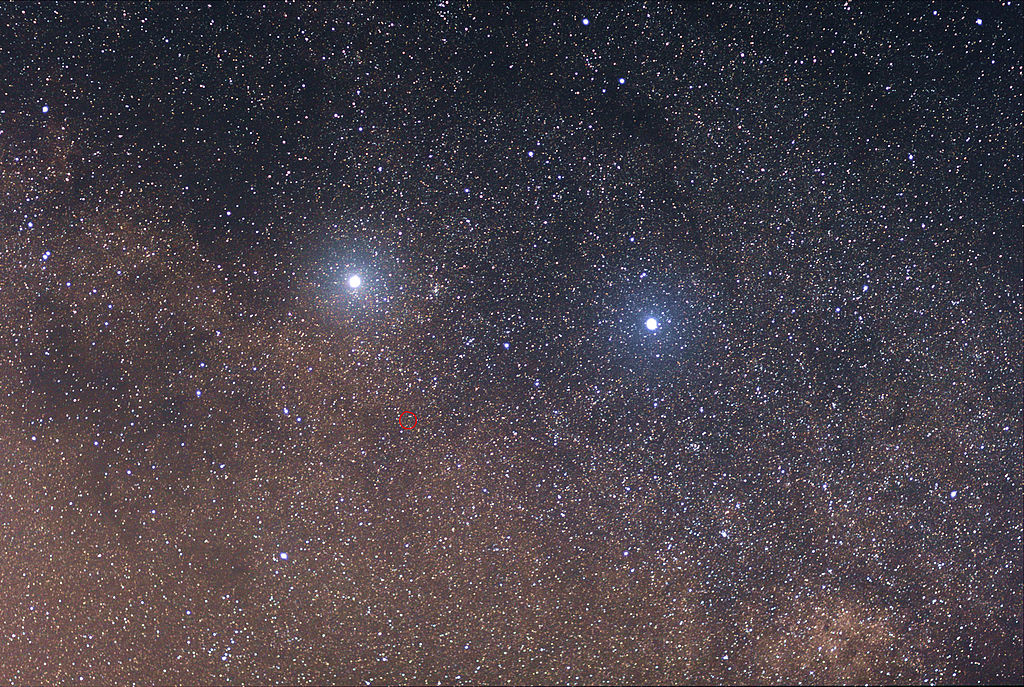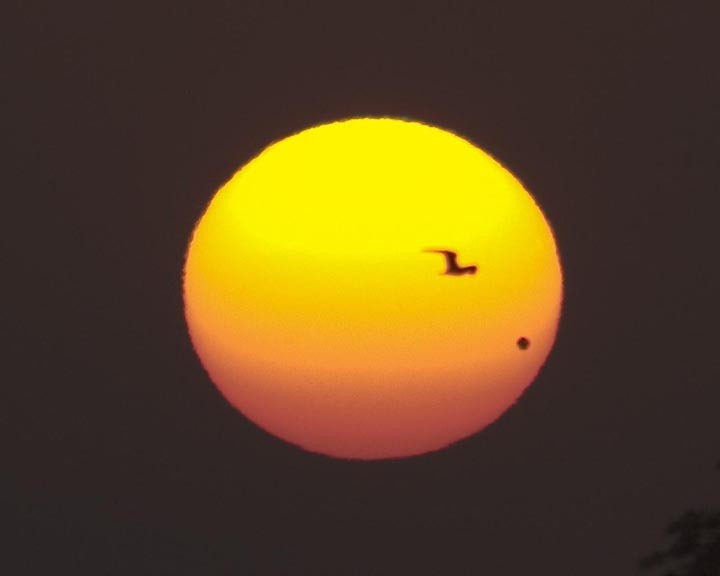Physicist: Good news! There’s an Earth-sized planet in the habitable zone of Proxima Centauri, a star so named because it’s the closest star to Earth and it’s in the constellation Centarus. This isn’t a question anyone asked, but I thought it was worth mentioning: the closest star that could possibly host life is the closest star.
The new planet is called “Proxima B” because the naming convention says that’s what you should call the fist planet discovered around a star called “Proxima” (if/when another planet is discovered, it would be called “Proxima C”, then D, etc.). This is hopefully a place holder until someone comes up with a better name, like Krypton or Xena. Strictly because it’s a little cumbersome to refer to both the star, Proxima, and the planet, Proxima B, for the purposes of this post I do hereby declare that the newly discovered planet will be called “Bacchus”, after the god Bacchus. (Bacchus: when you’re too drunk for organized religion, welcome to the Bacchanalia.)

The bright stars are Alpha Centauri A and B, which are both about the same size as our Sun. Proxima Centauri (sometimes called Alpha Centauri C) is the nearly invisible red star that’s circled below them. A and B orbit each other every 80 years (so they switch places about every 40) and Proxima may orbit the pair every half-million years. This picture is very zoomed in, so to the naked eye these appear to be a single star.
Just for a rough sense of scale, the Earth is 1 AU from the Sun (this is how the “Astronomical Unit” is defined), Proxima is a little over a quarter million AU away from us and less than a tenth that distance from Alpha Centauri (a pair of stars it may-be/probably-is orbiting). Bacchus orbits Proxima every 11 days in an orbit that’s a twentieth the size of ours (0.05AU).
Bacchus was discovered using the radial velocity technique. As Bacchus orbits, its host star, Proxima, wobbles and we can detect its tiny back-and-forth movement using the Doppler Effect (things moving toward us appear slightly bluer and things moving away appear slightly redder). This wobble method reveals how long the orbit is (11 days) and gives a rough idea of the mass of the planet (around 1.3 Earths, give or take), but unfortunately it tells us very little more. If we were lucky enough that Bacchus’ orbit brought it between its star and us, then we’d be able to (possibly) get a look at its atmosphere and determine its size. Unfortunately, like the vast majority of exoplanets, Bacchus’ orbital plane is pointing off in some random direction, so it never eclipses Proxima from our perspective.

A bird and a planet (Venus) transiting in front of the Sun. We can use alignments like this to study the atmospheres of other planets by looking at how sunlight/starlight filters through them. Presumably we could study birds the same way, but it seems unlikely that anyone’s bothered to make the attempt.
So, beyond how much it weighs and where it is, we have no direct data on Bacchus. But take heart! We also have access to well-reasoned speculation! Gas giants tend to be gigantic, so with only 1.3 (give or take) Earth masses to work with, Bacchus is almost certainly a rocky planet. You’d expect that since Bacchus orbits so close to Proxima it would be hot, but Proxima is very dim (~1/10 the mass and ~1/10 the light of our Sun), so Bacchus should have more or less the temperature necessary for liquid water (the way Earth does).
Tight orbits also tend to lead to tidal locking. Like our Moon’s relationship with Earth, Bacchus may have one side always pointed at Proxima. It may literally have a dark side and a light side and if that’s the case, then there’s probably only a thin habitable region near the ring of twilight between the two.
We do know a lot about Proxima from telescopes. In particular, it’s a flare star which means that its magnetic field plays a central role in its behavior; energy stored in its twisted up magnetic field is occasionally released as bursts of x-rays and solar flares. That may mean that Bacchus’ atmosphere is already long gone. This is something stars do to their planets (see Mercury and Mars, for example), it’s just that flares and x-rays are especially good at it and Bacchus is especially close. That said, an already thick atmosphere and a healthy magnetic field go a long way toward preserving what air a planet has. Fingers crossed.
There is some good news: Proxima is extremely stable. Both our Sun and Proxima are about five billion years old, ours brightens over time and is due to burn out in another five billion years, but Proxima will still be doing what it does for the next few trillion (with a “t“) years. When Proxima runs out of fuel the universe will be several hundred times older than it is now, so even if there’s no life on Bacchus (or any other planets around Proxima), there’s still an incomprehensible amount of time to get it right. Things have a way of changing over a few trillion years (one would assume).
The bird/Venus/Sun picture is from here.







Pingback: There’s something new under the Sun! | Ask a Mathematician / Ask a Physicist